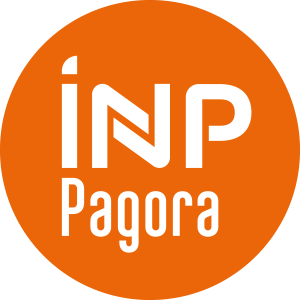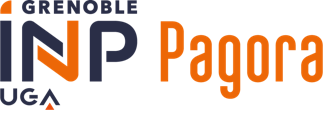Number of hours
- Lectures 8.0
- Projects 0
- Tutorials 8.0
- Internship 0
- Laboratory works 0
- Written tests 2.0
ECTS
ECTS 10.0
Goal(s)
Learning outcomes :
- To know the different gas treatment processes
- To choose the process best suited to the effluent to be treated
- To size the chosen process
Marc AUROUSSEAU
Content(s)
Processes for the treatment of gaseous effluents by gas/liquid absorption with and without reaction, by dust removal and by adsorption;
Process used to determine the limiting steps and choose the most suitable type of contactor or adsorber;
Dimensions of these contactors or adsorbers;
Remediation solutions adapted to the nature of the effluents and the constraints of a site.
GAS/SOLID ADSORPTION
Introduction: the various techniques of gas cleaning
Presentation of the adsorption
Adsorption kinetics
Equilibrium adsorption
Multicomponent adsorption
Implementation
DUST REMOVAL
Introduction
Reminders on the particulate state
Mechanical separators
Hydraulic separators
Filter separators
Electrical separators
GAS/LIQUID ABSORPTION
Introduction
Physical absorption
Absorption with chemical reactions: irreversible reaction of 1,1 order and m, n orders
Transfer in the presence of resistance in the gas phase
Transfer in the presence of complex reaction system
Exercices are performed throughout the course
Prerequisites
Kinetics ; mass balances ; reactors ; mass transfer.
A 2 hours written exam. Dust removal is not evaluated.
Written notes authorized. Copies of books or previous exams are banned.
Examination compensatable.
part I (Absorption) : mark N1
part II (Adsorption) : mark N2
At the discretion of teachers, evaluated work (e.g., analysis and synthesis of articles) in small groups may be carried out. The mark will be N3. It will then be included in the calculation of the average mark with a 0.1 coefficient on the final note.
N = moyenne (N1, N2) ou N' = 0.9*N + 0.1*N3
The course exists in the following branches:
- Curriculum - Pagora Engineer - Apprentice - Semester 9
- Curriculum - Pagora Engineer - Student - Semester 9
- Curriculum - Professionnal training - Semester 9
Sécurité-Environnement
LE CLOIREC P. Les composés organiques volatils (COV) dans l'environnement. Paris ; Londres ; New York : Tec & doc : Lavoisier ; [Nantes] : École des mines de Nantes, 1998, 734 p.
POPESCU M., BLANCHARD J.M., CARRE J. Analyse et traitement physicochimique des rejets atmosphériques industriels : émissions, fumées, odeurs et poussières. Paris ; Londres ; New York : Tec & doc, 1998, 854 p.
TRAMBOUZE P. Les réacteurs chimiques. II Technologie. ( http://sicd1.ujf-grenoble.fr/-Bases-de-donnees-de-A-a-Z- ) Les Techniques de l'Ingénieur, J4 020 (1988)
CHARPENTIER J.C. Gas-liquid reactors. Chemical Reaction Engineering Reviews (D. Luss and V.W. Weekman, eds.), Amer. Chem. Soc. Symp. Ser. 72, 223-261 (1978)
BIRD R.B., STEWART W.E., LIGHTFOOT E.N. Transport phenomena. 2nd ed. New York ; Chichester ; Weinheim : J. Wiley & sons, 2007, 905 p.
SHERWOOD T.K., PIGFORD R.L., WILKE C.R. Mass transfer. Auckland ; New York ; Montreal [etc.] : Mac Graw Hill ; Tokyo : Kogakusha, 1975, 677 p.
SCHWEICH D. Génie de la réaction chimique. Londres ; Paris ; New York : Ed. Tec. & doc., 2001, 610 p.
ROUSTAN M. Transferts gaz-liquide dans les procédés de traitement des eaux et des effluents gazeux. Paris ; Londres ; New York : Éd. Tec & Doc, 2003, 798 p.



